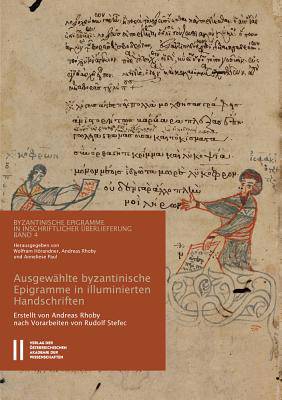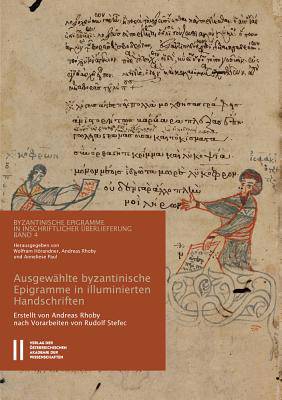
- Afhalen na 1 uur in een winkel met voorraad
- Gratis thuislevering in België vanaf € 30
- Ruim aanbod met 7 miljoen producten
- Afhalen na 1 uur in een winkel met voorraad
- Gratis thuislevering in België vanaf € 30
- Ruim aanbod met 7 miljoen producten
Byzantinische Epigramme in Inschriftlicher Uberlieferung Band 4
Ausgewahlte Byzantinische Epigramme in Illuminierten Handschriftenverse Und Ihre 'Inschriftliche' Verwendung in Codices Des 9. Bis 15. Jahrhunderts. Erstellt Von Andreas Rhoby. Nach Vorarbeiten Von Rudolf Stefec
Andreas Rhoby
Paperback | Duits
€ 354,45
+ 708 punten
Omschrijving
Byzantium plays a vital role for the transmission of ancient, late antique and Medieval Greek texts. Thousands of manuscripts preserved in libraries and collections are full of texts of ancient tragedians, late antique church fathers and particularly of Biblical texts, which represent the lion's share of transmitted manuscripts. A considerable number of manuscripts, depending on the setting in which they were copied, are equipped with illuminations or various kinds of ornamentation which increase their value. These often very elaborately and colorfully designed depictions are usually accompanied by texts, which, due to not belonging to the main text of the manuscript, are called paratexts. A considerable number of these paratexts are in verse form. Such texts, called book epigrams, fulfill various functions: they explain the depicted scenes, highlight the relationship between the manuscript's main text and the illumination, or act themselves as images, as for example when the text of the epigram is written in the shape of a cross or inscribed into an ornamental frame. Many of these texts, considered purely on visual grounds, already resemble inscriptions which are preserved on other kinds of surfaces and objects. The current volume is structured like the preceding three volumes of the series Byzantine epigrams on objects, which have so far presented inscriptional verses on frescoes and mosaics; icons and portable objects; and on stones. The publication's focus is on critical editions of the texts, (German) translations of the Greek texts, and commentaries. Besides general chapters on the cultural-historical phenomenon of quasi-inscriptional verses in manuscripts, paleography, language etc., almost all the epigrams treated are also depicted in the volume's collection of plates in order to facilitate study of the original context of the verses.
Specificaties
Betrokkenen
- Auteur(s):
- Uitgeverij:
Inhoud
- Aantal bladzijden:
- 848
- Taal:
- Duits
Eigenschappen
- Productcode (EAN):
- 9783700181040
- Verschijningsdatum:
- 16/02/2018
- Uitvoering:
- Paperback
- Formaat:
- Trade paperback (VS)
- Afmetingen:
- 211 mm x 297 mm
- Gewicht:
- 1496 g

Alleen bij Standaard Boekhandel
+ 708 punten op je klantenkaart van Standaard Boekhandel
Beoordelingen
We publiceren alleen reviews die voldoen aan de voorwaarden voor reviews. Bekijk onze voorwaarden voor reviews.










